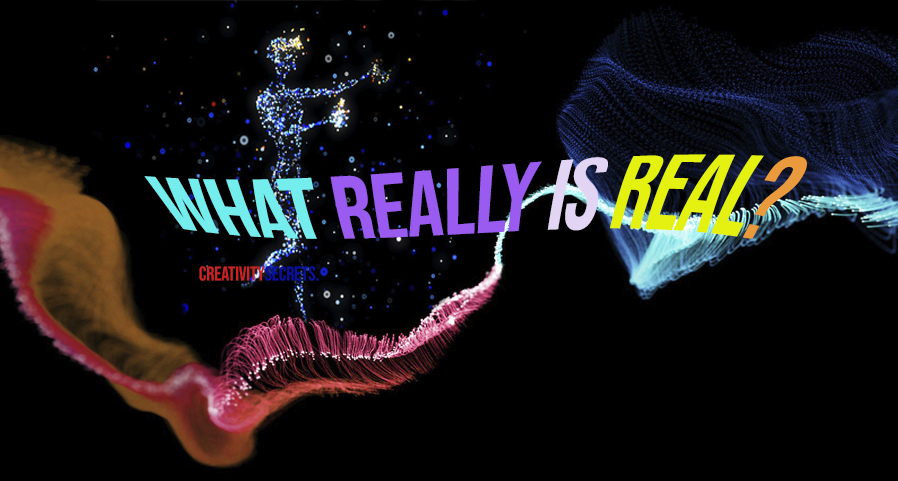What Really is Real...?!
So, what is real?!
Are you sure of the reality of your world?!
Could you be living in a virtual matrix instead…?!
The Urban Myth of our reality as a simulation popularized by the movie Matrix in 1999 has continued to raise interesting existential questions. The makers Wachowski brothers captured the imagination of the world by challenging our perception of reality and introducing the concept of humans living in a simulated world created by machines. The Matrix is already manifesting itself at different levels of immersion in our world today, leading to new social constructs and emergence of new businesses. Several businesses across technology, media and entertainment industries, are already monetizing even our partial immersion for a short time.

At a micro level, we have all experienced our transformation when watching an engrossing movie in a theatre, where we find ourselves immersed and often lost in the world created by the movie makers. Most of us experience that trance-like state almost daily for shorter timeframes when connected to our phones through TikTok or Facebook feed or playing a video game, which provides the necessary customer engagement for monetization by those platforms.
The Creativity Funnel starts with ideas — generating a lot of ideas and choices. You can then choose between those ideas and narrow down the options, by making decisions that involve trade-offs around one’s own individual values, priorities and beliefs. They are also often shaped by external factors that may or may not be within one’s control. You can continually refine those ideas and iterate upon them to reach the final creation.
The Matrix is already manifesting itself at different levels of immersion in our world today…
Even as we find ourselves immersing in these machine generated environments at different levels of engagement (smart phone to movies to video games), various eminent technologists, business leaders, scientists, and philosophers are already questioning the “realness” of our reality. In 2016, Elon Musk commented that there is a billion-to-one chance that we are living in a computer-simulated matrix, especially given the advancements in the world of computer graphics and the power of computers in rendering realistic 3-D environments. Even the eminent physicist Neil DeGrasse Tyson (2017) puts the odds of us being in a simulation at 50–50.
Musk was inspired by Oxford philosopher Nick Bostrom’s (2003) paper Are You Living in a Computer Simulation which points out that if even one civilization can simulate conscious beings through computers, it would lead to the simulation of billions of highly detailed civilizations. Max Tegmark, an MIT scientist corroborates Bostram’s theory, stating how we could be in a computer-simulated game with an environment defined by algorithms, given the observed rigidity and mathematical structure of the actual world we are living in. Glitches in the Matrix (GITM) is a related popular urban legend where people across the globe have reported glitches in the matrix starting from the fundamental assumption of being in the matrix, to begin with. Dreams are often categorized as GITM as well. And so are my bad grades and reviews, as I would like to believe and claim.
Lisa Randall a theoretical physicist at Harvard argues against the concept of being in a simulation, citing how humans as a species are too self-absorbed to be interested in creating a matrix and a virtual world in the first place. I personally like David Chalmers’ view of being indifferent to the idea and continuing to do things that are interesting so that our simulators do not shut us down. The business implications of the urban myth of the Matrix goes beyond the entertainment (movies), social media, and the video games industry, extending to the new emerging businesses built around and for the virtual reality environment — the Metaverse as Meta calls it.
So even as Mark Zuckerberg pushes and develops a virtual Metaverse amidst Meta’s collapse towards oblivion, I would urge you to take risks and chances, create, and not take life seriously because, for all you know, you may very well be living in a Matrix!
YOLO (you only live once) even in a simulation.
_____
References
Bostrom, N. Are You Living In a Computer Simulation? Philosophical Quarterly (2003) Vol. 53, №211, pp. 243‐255. (First version: 2001)
Musk, E., Code Conference (2016) Interview with Kara Swisher. Youtube. https://www.youtube.com/watch?v=wsixsRI-Sz4
Lewis, P. J. (2013). The Doomsday Argument and the Simulation Argument. Synthese, 190(18), 4009–4022. https://doi.org/10.1007/s11229-013-0245-9
Mystakidis, S. (2022). Metaverse. Encyclopedia, 2(1), 486–497. https://doi.org/10.3390/encyclopedia2010031
Tyson, N.G. (2017) Interview with Larry King Youtube. https://www.youtube.com/watch?v=SYAG9dAfy8U
_____
CREATIVITY SECRETS
The above is an excerpt from the book: “CREATIVITY SECRETS: Creativity & Innovation Secrets for Design | Business | Art”, 2018, by ABHAY (Wharton grad, Artist, Entrepreneur). www.CreativitySecrets.net